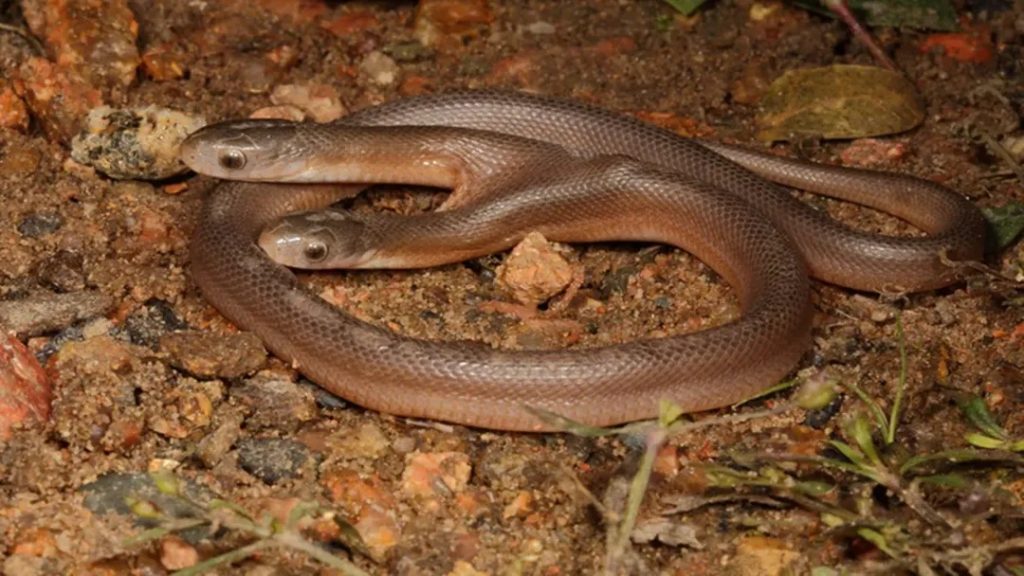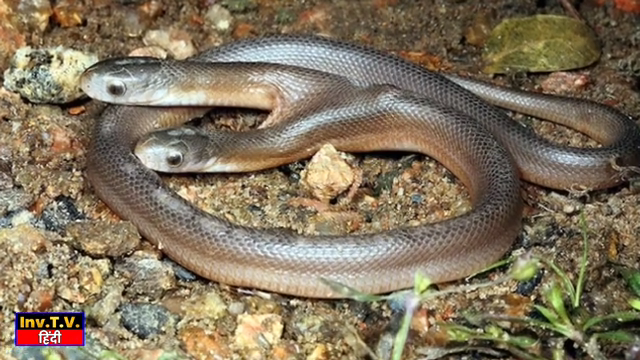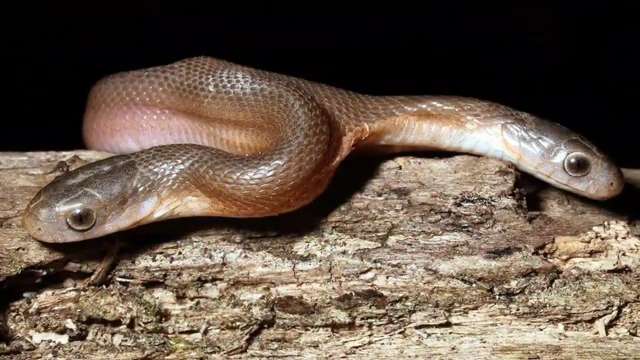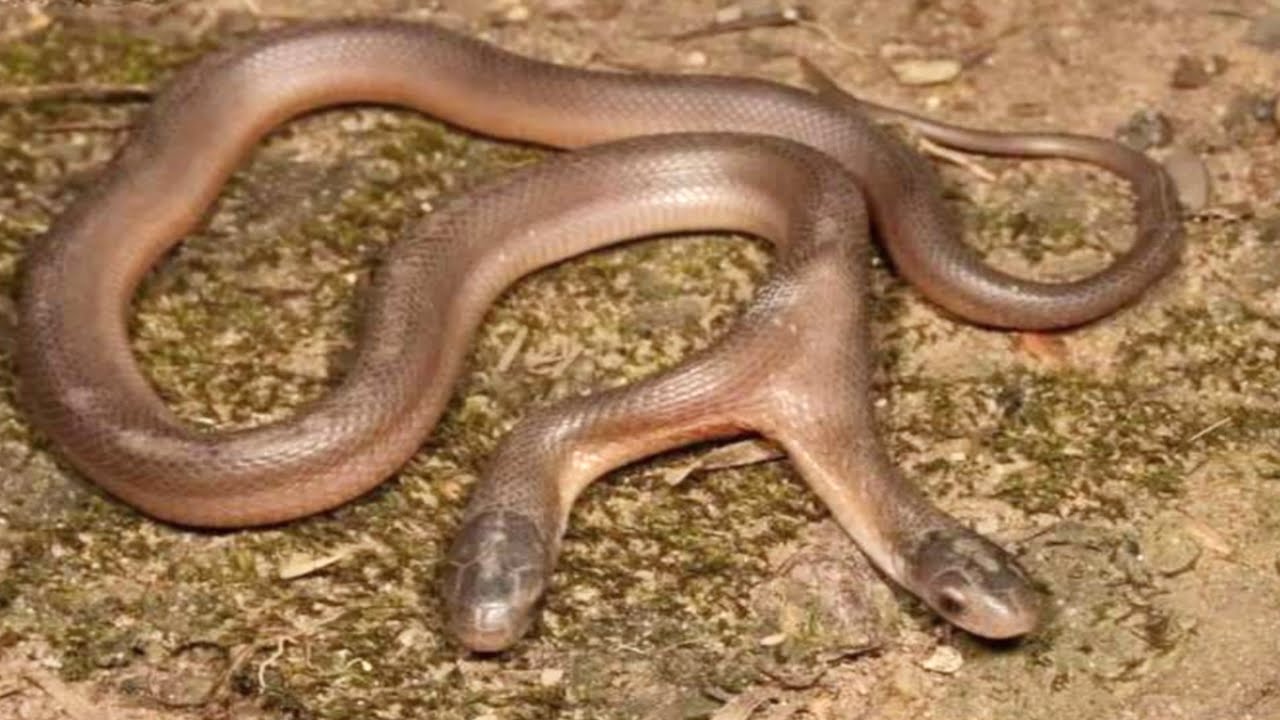The 2-headed snake belongs to the Southern brown egg-eating snake, about 0.3 m long. After being discovered sneaking into people’s houses, the snake was released into the wild.
The condition in which animals are born with more than one head is more common in reptiles than in mammals. This phenomenon is scientifically known as polycephaly. One of the causes of this condition is the embryo’s failure to complete division. In addition, two separate embryos can incompletely fuse together, creating an Orthrus-like creature (In Greek mythology, Orthrus or Orthus, was a two-headed dog that guarded the cattle of Geryon and was destroyed. Hercules kills). 
According to data from an article published in the Journal of Comparative Pathology in 2013, out of 4,087 hatched king cobras, only three have two heads.
Recently, snake rescuer Nick Evans was called by a man in the town of Ndwedwe, in northern Durban, South Africa to deal with the southern brown egg-eating snake (Dasypeltis inornata) discovered in his garden. Because he didn’t want anyone to harm this strange animal with 2 heads, the man put it in a bottle and asked Evans to bring it to a safe place.
Evans later posted on his personal Facebook page, saying: “It’s strange to see this deformed snake. It is immature, only about 0.3 m long. It’s interesting to watch it move. Sometimes, the two ends try to go in opposite directions. Other times, one end rests on the other. That seems to be the most efficient way to move around.”
Occasionally, two-headed snakes are found in captivity. However, they are rarely found in the wild.
Normally, animals born with many heads rarely live long. This depends on the degree of separation between the 2 ends. 2 heads with 2 different stomachs often lead to a situation of competition for prey. As a result, they are more likely to starve to death than those with only one stomach. However, an organ that works for two bodies will expose the animal to excessive stress, which can shorten its lifespan.
Evans said the brown snake is safe and is being cared for professionally. He expressed surprise that it was able to survive in the wild until being sighted.
“There is no benefit to releasing a two-headed snake,” he explained . As far as I know, they usually don’t live very long. It is usually unable to move or moves very slowly. It is also easily caught by other predators.”
Many people left comments on Evans’ post saying they were delighted that the snake was finally safe.
